 "Distraxi's idea of perfection is a Jagroen" (distraxi)
"Distraxi's idea of perfection is a Jagroen" (distraxi)
07/07/2018 at 01:09 ē Filed to: Make Casey Great Again, Dozerlopnik
 1
1
 6
6
 "Distraxi's idea of perfection is a Jagroen" (distraxi)
"Distraxi's idea of perfection is a Jagroen" (distraxi)
07/07/2018 at 01:09 ē Filed to: Make Casey Great Again, Dozerlopnik |  1 1
|  6 6 |
Good day today. Changed the thermostat on the Mitsi then spent half a day making a start on project Make Casey Great Again.
Cleaned some of the crap off him, got the engine cover off (less simple than you might think - bolted on with rusty bolts, weighs a ton and has to be lifted over the exhaust), removed spiders web, pine needles and other flammables from engine bay and behind the instrument panel, dismantled and cleaned wildlife out of air cleaner.
Checked fluids, refilled radiator, drained water from diesel tank -or some of the water at least - the drain cock drips rather than running and after taking about 2 hours to get half a liter out I got bored. Itís mostly gone though: Iíll drain and clean the tank properly once I establish whether all the expensive bits work - no point if heís fated to remain lawn art.
Cleaned all the crap out of the battery compartment, sanded the battery terminals, and hooked up the battery from the Mitsi.
Result: It turns over once or twice, then the starter disengages and spins up. AFAIK heavy diesels donít have a Bendix arrangement, the starter solenoid shoves the spur gear into engagement. So Iím guessing the solenoid is dropping out as battery voltage dips - a multimeter shows it dropping to <10V at the posts as the starter load comes on. Tried it again with another battery in parallel using jumper cables: no joy. Tried connecting the second battery directly to the starter terminal to avoid voltage drop in the cables - still no joy. having said that, the terminals are all pretty corroded so the jumper leads may not have been transferring much current: worth a try though.
Then rain stopped play - itís winter here :-(
Still, it turns over, and Iím getting the odd puff of white smoke from the exhaust, so itís getting fuel. Both of which are good news.
Next step is charge the Mitsi battery (itís been sitting a few weeks so it may not be full), put new battery terminals on it and clean up the chassis earth, and try again. If that donít work, pull the solenoid and have a looksee, or get a beefier battery: maybe an SUV battery just isnít man enough to start this sucker (itís supposed to have 2 x 70A batteries, according to the manual, though thereís only a live cable for one, so who knows). No idea where I get a starter for a 70s Case if it needs replacing - hopefully it can be rebuilt if it comes to that.
Photos:
(yes, half of them are upside down - Iíve never managed to persuade Kinja to accept re-oriented photos once Iíve taken them the wrong way on my iPhone. The really frustrating thing is theyíre the right way up in edit mode. Youíll just have to cope).
ďBeforeĒ
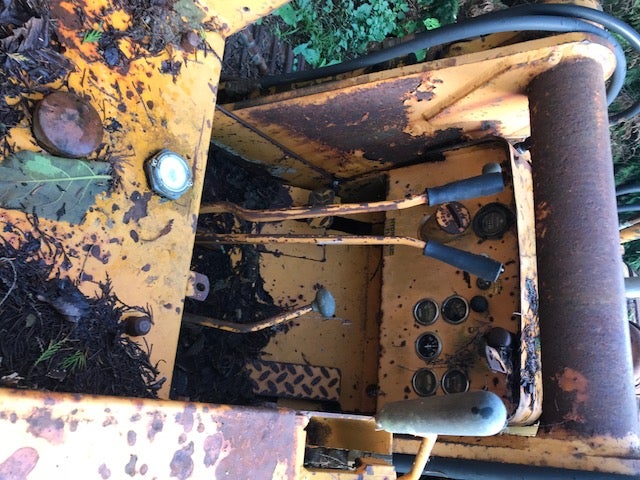
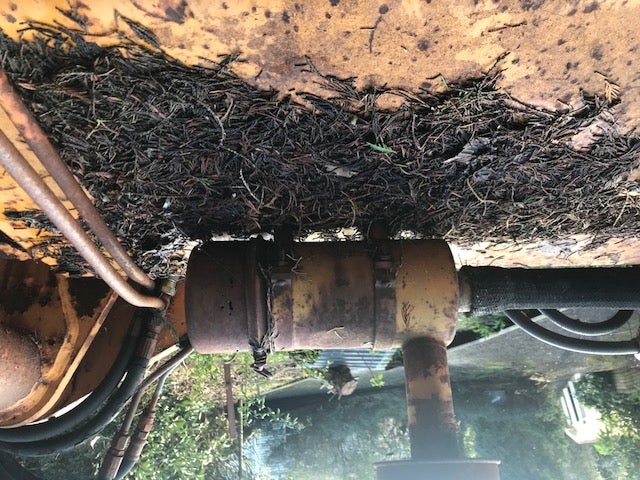
Fortunately this was only holding the engine cover on. Came off nice and easily - canít think why:
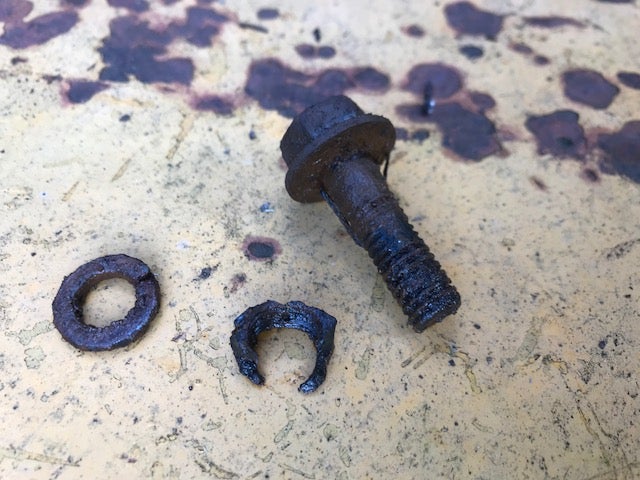
Hood removed:
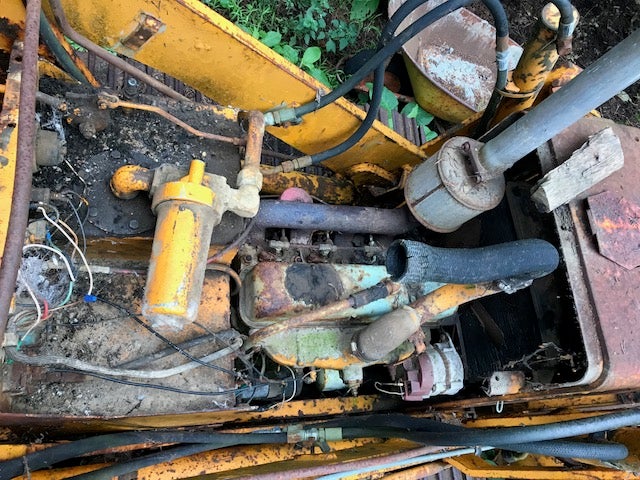
Pretty sure transmission fluid shouldnít have white sludge in it, even bulldozer transmissions fluid. Never mind, deal with that once I get it running. Itís a 3 speed torque converter auto, with direction handled by a hydraulic ďpower shuttleĒ, so 3 speeds in reverse too.
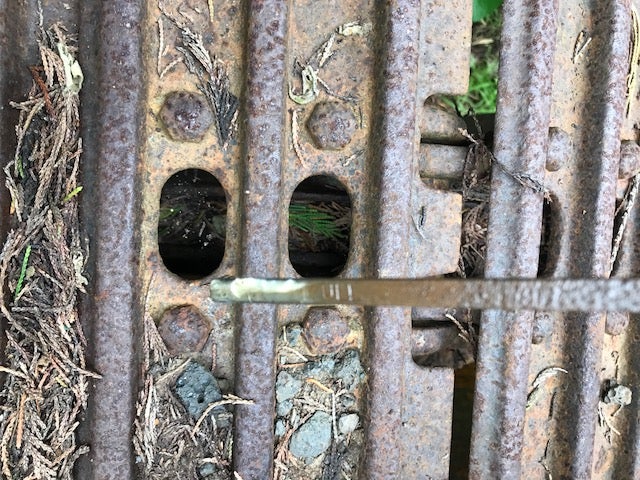
Battery compartment:
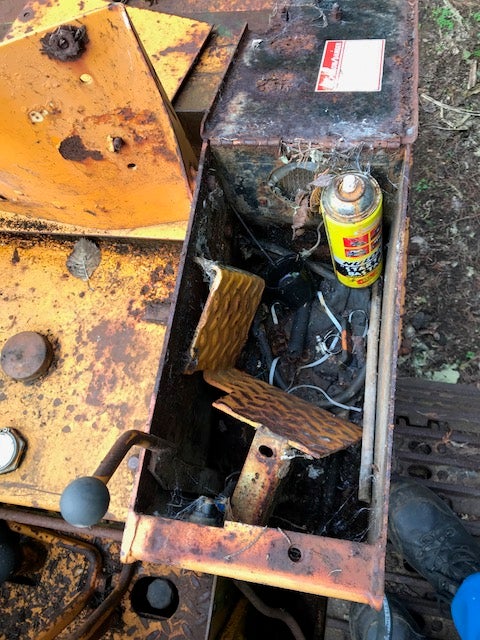
Air filter. The dust capís not exactly airtight. Itís actually fairly clean on the inside of the filter though.
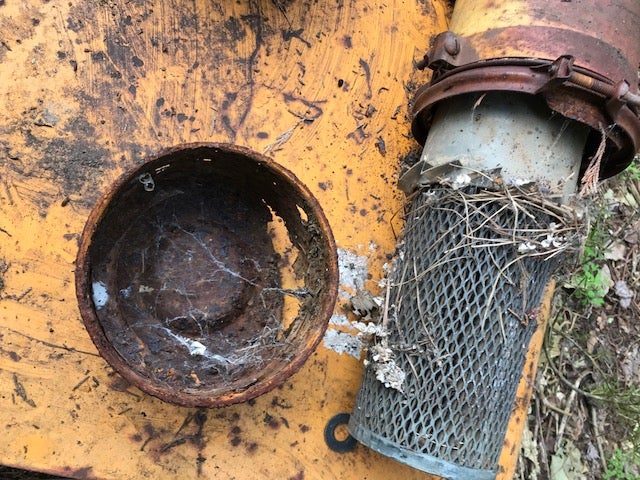
Though Iím pretty sure thereís not supposed to be spiders webs in the inlet manifold. Never mind, I expect the pistons will chew them up OK.
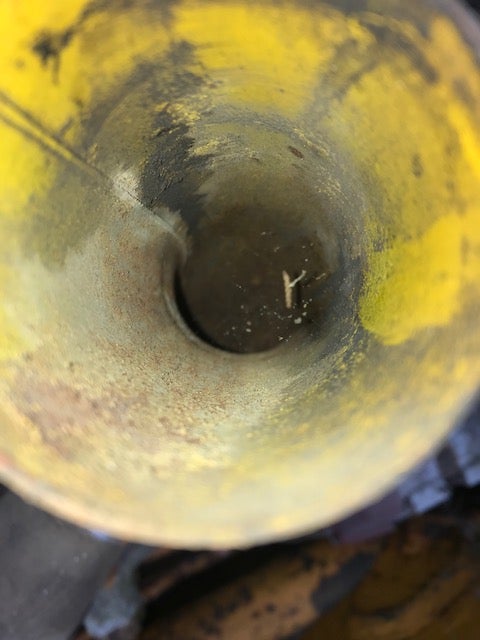
Radiator before drinking 12 liters of water - guess it was bone dry. Doesnít seem to be leaking though - weíll see what happens when itís warmed up.
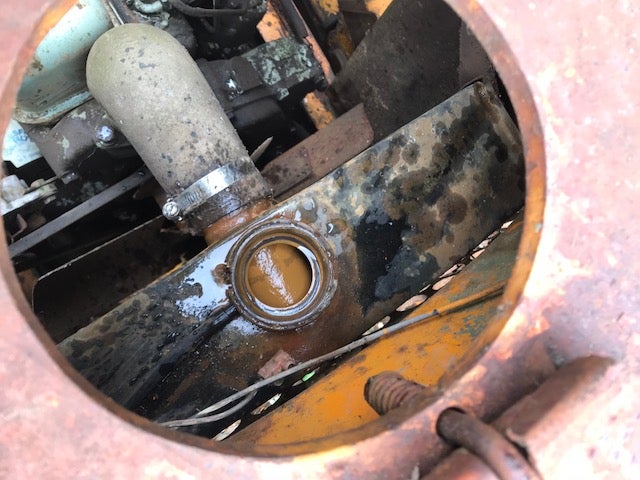
Engine compartment all nice and shiny(ish) and ready to roar. The linkage you can see in the bottom right corner running under the pipe is the hand throttle. Which is connected to absolutely nothing, and as far as I can see thereís nothing it *could* connect to. Thereís a perfectly good foot throttle though, so it probably doesnít matter
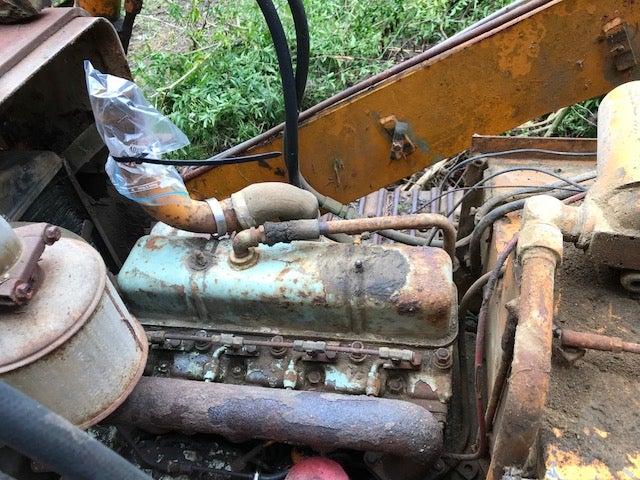
Second battery connected to starter. Tracks make incredibly useful shelves for standing on and parking crap on - more vehicles should have them.
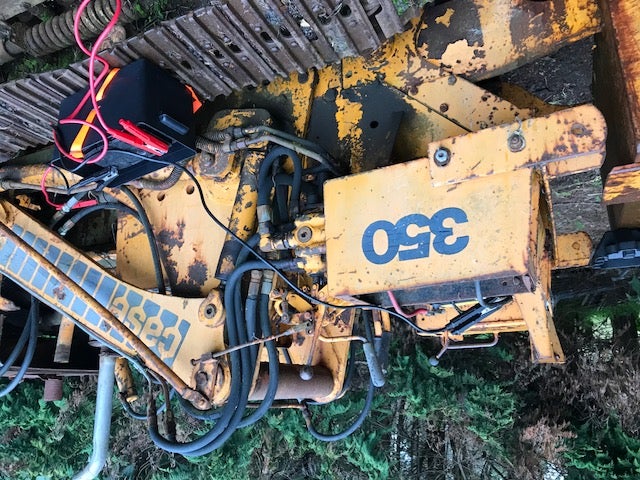
 ITA97, now with more Jag @ opposite-lock.com
> Distraxi's idea of perfection is a Jagroen
ITA97, now with more Jag @ opposite-lock.com
> Distraxi's idea of perfection is a Jagroen
07/07/2018 at 02:00 |
|
That white sludge in the hydraulic oil is water contamination.††
 Distraxi's idea of perfection is a Jagroen
> ITA97, now with more Jag @ opposite-lock.com
Distraxi's idea of perfection is a Jagroen
> ITA97, now with more Jag @ opposite-lock.com
07/07/2018 at 02:18 |
|
That was my first guess. Will be interesting to figure out how waterí s getting into the transmission though - hopefully not via the radiator since I just dumped another 3 gallons in there.
 ITA97, now with more Jag @ opposite-lock.com
> Distraxi's idea of perfection is a Jagroen
ITA97, now with more Jag @ opposite-lock.com
> Distraxi's idea of perfection is a Jagroen
07/07/2018 at 02:41 |
|
Sometimes it can be a faulty cap seal on the tank, or just from the atmosphere over time via the vent in the system. It could also be that flange seal on the top of the tank. I wouldnít necessarily expect there to a cooling loop in the radiator for the hydraulic system , so it probably isnít from the cooling system.
In an earlier life I turned wrenches for a living as a hydraulic mechanic for a couple of years. Iím happy to offer suggestions on the hydraulic system.
 Distraxi's idea of perfection is a Jagroen
> ITA97, now with more Jag @ opposite-lock.com
Distraxi's idea of perfection is a Jagroen
> ITA97, now with more Jag @ opposite-lock.com
07/07/2018 at 03:45 |
|
I may take you up on that.
Fortunately a quick browse through the forums suggests that heavy machinery is more tolerant of this sort of thing than car transmissions. T he general consensus seems to be flush it and keep going. W hich doesnít work for a car -† water in the trans fluid means instant rebuild.
 Echo51
> Distraxi's idea of perfection is a Jagroen
Echo51
> Distraxi's idea of perfection is a Jagroen
07/07/2018 at 04:43 |
|
Can you get a SUV or some vehicle with a decent sizes alternator up close enough for jumper cables? Might help with the extra power instead of just 2 batteries.
Itís a diesel iíd assume, so keep something on hand to shut off the air supply in case it decides to run away on you.
Good luck with it, it being able to spin is definitely a good starting point :D †
 ITA97, now with more Jag @ opposite-lock.com
> Distraxi's idea of perfection is a Jagroen
ITA97, now with more Jag @ opposite-lock.com
> Distraxi's idea of perfection is a Jagroen
07/07/2018 at 09:28 |
|
Oh yes, much more tolerant . Once you get the engine running, then flush the hydraulic oil and make sure that flange on the top of the tank is sealed. Over enough time, water in the system can cause pitting† on cylinder walls and other internal surfaces, but the move would be to flush it out and see how everything works.††